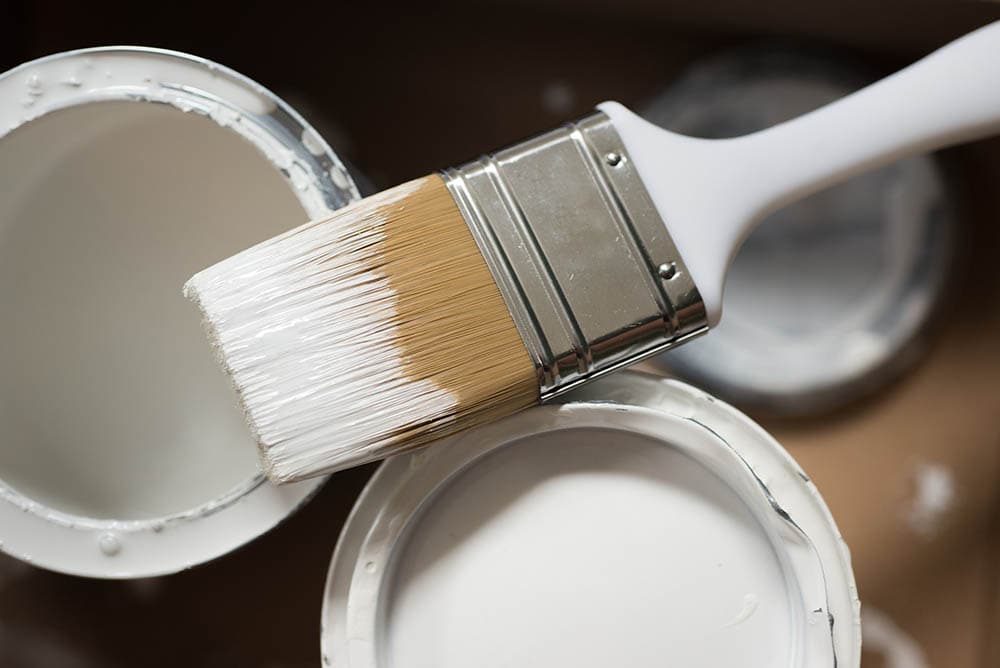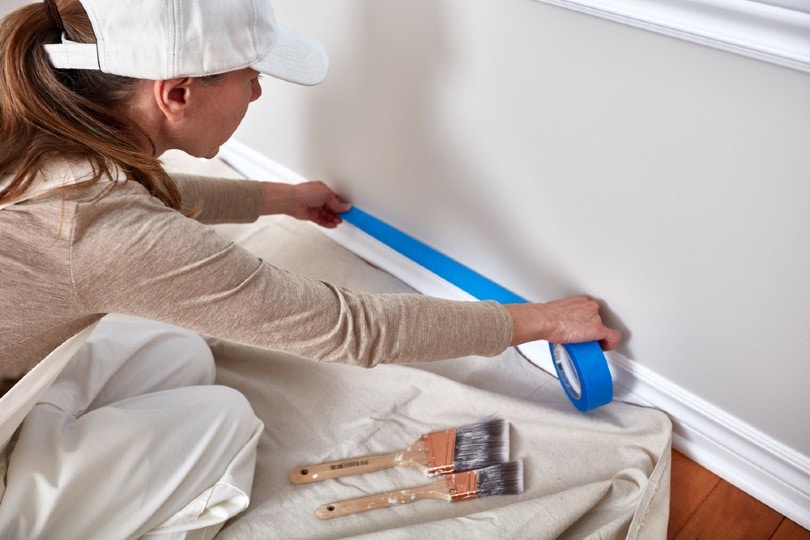What Is Magnetic Paint? Types, Best Uses & FAQ
-
Brooke Bundy
- Last updated:

If you’re thinking about renovating your space, you’re probably already accustomed to long hours at the hardware store over-analyzing which color to paint your walls. Now, you have even more options than simply teal or magenta, shiny or matte. Magnetic paint is available to magnetize your walls, doors, décor, or anything you’d like as long as it’s a smooth surface. There’s even a special type with chalkboard properties that can transform an entire wall into a bulletin board or creative space. Let’s talk about the perks of using magnetic paints, as well as situations where it might not be the most fitting.
How Does It Work?
Iron filings give magnetic paint its special properties. You can use magnetic paint to cover virtually any smooth surface, such as wood, plaster, or metal. Before you apply magnetic paint, you’ll need to cover your surface with at least two coats of magnetic primer.
Once the surface is dry, you’ll need to apply at least three layers of magnetic paint, letting it dry between coats per the manufacturer’s instructions. If the magnetic paint isn’t the color you’d hoped for, you can also add a layer of regular paint on top of magnetic paint once it dries without affecting its magnetism. You might want to add a layer of varnish to protect the paint if it will experience a lot of friction, such as a children’s play area where they’ll slide magnets across the surface.

What Are the Different Types of Magnetic Paint?
You can find several different colors of magnetic paint. Of course, your options are relatively limited compared to the endless spectrum of colors available in regular latex paint. Remember, you can always paint over magnetic paint to achieve your desired color later.
There is a second type of magnetic paint, though, where that trick doesn’t work. Chalkboard paint, the popular and Pinterest-esque embodiment of farmhouse living, is also available in a magnetic form. Unlike original magnetic paint, magnetic chalkboard paint only comes in black and gray. You can’t paint over it, or it will lose its chalkboard properties.
Where Is It Used?
As long as you choose a smooth dry surface, you can apply magnetic paint practically anywhere. It’s most commonly used to magnetize a smaller area, such as a portion of a wall or a piece of furniture. If you wanted to, you could use magnetic paint to cover an entire room. It isn’t recommended to use magnetic paint on surfaces with harsh exposure to the elements, such as an exterior wall. If you have specific questions about what materials work well with the brand of magnetic paint you had in mind, you can contact the manufacturer or ask someone in the paint section at the hardware store.
Advantages of Magnetic Paint
Magnetic paint has the advantage of being regular paint with magnetic properties that can allow you to hang light objects and magnetic photo tiles. If it’s not the shade you want, you can paint over it. There’s no need for your living space to look like a school room. Simply apply the magnetic primer and paint to your walls, and then paint them the color you want. No one will ever know the difference, until you can effortlessly hang pictures without tacks or tape.
Magnetic chalkboard paint creates the ultimate bulletin board that’s perfect for a home office, children’s play space, or modern photo gallery. You can draw on it with chalk, arrange pictures and to-do lists with magnets, or set the kids free to etch a picture that won’t hurt your walls. Unfortunately, though, it’s only available in black and gray. Unlike magnetic paint, you can’t apply latex paint over it, or it’ll ruin the chalkboard effect. Thus, if you don’t want your entire space looking like an elementary school, you might want to opt for magnetic paint that you can safely paint over, or chalkboard paint that’s available in different colors.

Disadvantages of Magnetic Paint
Magnetic paint does work. However, there is some controversy in the DIY world about how well it does its job. Some people say it’ll hold small magnets, but the chunky ones fall off. Someone calculated that three coats of magnetic paint held about 0.25 pounds of weight, compared to their refrigerator door which was able to support 3.40 pounds.
If you’re looking to magnetize a small space, it’s probably more efficient to buy a magnetized sheet of galvanized steel. You can paint it over galvanized steel with any color of regular paint that you’d like since it won’t affect the steel’s magnetic properties.
If you’re not sure if the magnetism is strong enough for your project, you should check the paint can for the content percentage of iron filings.
Frequently Asked Questions (FAQs)
1. How strong is magnetic paint?
The percentage of iron filings determines the strength of magnetic paint, which will vary by the brand and specific type. In general, magnetic paint does work, but it isn’t as strong as magnetized galvanized steel or probably even your refrigerator door.
2. What colors are available?
Magnetic paint is available in different colors, but one of the best things about it is that you can paint over it with regular paint without affecting its magnetic properties. This gives you the freedom to magnetize any surface while still choosing the final color. Magnetic chalkboard paint is more limited. It only comes in black and gray, and you can’t paint over it.
3. Do you need to apply primer first?
Yes. Every successful painting project begins with a solid coat of primer. You should cover the surface with two coats of magnetic primer before you apply magnetic paint.

A Quick Reference Guide
There are several instances where magnetic paint might be a good idea, and a few where the notion simply doesn’t stick. As you might expect, magnetic paint is more expensive than regular paint, so you shouldn’t use it unless you really want the magnetic effect.
Sometimes magnetic chalkboard paint might be a better idea than magnetic paint, but your options are more limited since it only comes in two colors, and you can’t paint over it. Here’s a run-down of examples of when you might prefer one type of magnetic paint over the other:
| When to Use Magnetic Paint | When to Use Magnetic Chalkboard Paint |
| For walls, since you can paint over it | To create a magnetic chalkboard surface on walls, wooden boards, etc. |
| For discreet picture hanging, as long as your photos are lightweight | Anything you want gray or black with added properties |
| To make a hidden magnetic board built into your kitchen wall for grocery lists, recipes, etc. | Great for home offices, children’s play areas, and modern design spaces |
Conclusion
The bottom line is that magnetic paint works, but it’s not as strong as your refrigerator door. Magnetized galvanized steel functions more efficiently if you’re looking to magnetize a small surface area. Plus, you can paint over in any color. If you truly wanted a magnetic chalkboard, your best bet would be to cover magnetized galvanized steel with any color of chalkboard paint. If you’re wanting to paint a wall, magnetic paint still works well, and you can paint over it with any color that you want. Just don’t expect to hang anything too heavy.
Featured Image Credit: Skitterphoto, Pixabay
Contents
